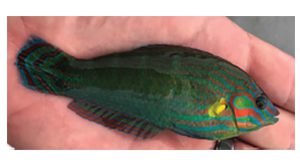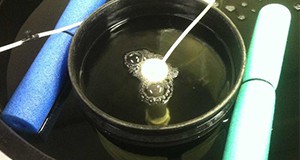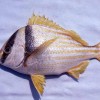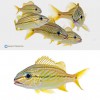
The production of freshwater ornamental fish dominates the ornamental aquaculture industry, yet the small marine ornamentals sector has grown substantially in recent years. This 7-page fact sheet written by Elizabeth M. Groover, Matthew A. DiMaggio, and Eric J. Cassiano and published by the UF/IFAS Program in Fisheries and Aquatic Sciences, School of Forest Resources and Conservation briefly reviews the more common groups of marine ornamental fishes cultured in the United States. As we learn more about marine ornamentals and as aquaculture protocols for marine ornamentals develop and improve, it is possible that more species may become economically feasible to produce and more cultured marine fish may begin to supplement wild-caught stocks in the marine aquarium trade.
https://edis.ifas.ufl.edu/fa224


